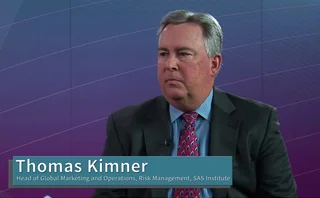
Chinese, Vietnamese and Indonesian banks most risky in Asia
Banks domiciled in China, Indonesia and Vietnam are the most risky in Asia when it comes to economic and industry risk combined with problem assets, according to a 14-country study by rating agency Standard & Poor’s (S&P).
S&P said it had compiled its results based on a gross problematic assets (GPA) benchmark based on economic and industry risks, in addition to other data and discussions with banks and regulators. The GPA estimates represent the percentage of domestic credits extended to the private sector and to non-financial public entities that could become problematic in a reasonable worst-case economic recession or slowdown. “Problematic assets, in this context, include overdue loans, restructured assets (where the original terms have been altered), foreclosed assets and non-performing assets sold to special purpose vehicles,” S&P said.
“Financial sectors in the highest GPA range tend to exhibit poor institutional management, less rigorous prudential supervision, pervasive government-directed lending, moral hazard and – in the case of many transition economies – the ongoing drag of the bad debt of public and newly privatised enterprises,” S&P said. Australia ranked the lowest in terms of S&P’s GPA methodology.
In terms of estimated recovery rates on non-performing loans, Singapore ranked highest, with 75%, followed by Australia and New Zealand, with 70% each. While at the other end of the spectrum China and Indonesia ranked lowest, with 15% each. The Philippines came close, with a 25% estimated recovery rate.
Only users who have a paid subscription or are part of a corporate subscription are able to print or copy content.
To access these options, along with all other subscription benefits, please contact info@risk.net or view our subscription options here: http://subscriptions.risk.net/subscribe
You are currently unable to print this content. Please contact info@risk.net to find out more.
You are currently unable to copy this content. Please contact info@risk.net to find out more.
Copyright Infopro Digital Limited. All rights reserved.
As outlined in our terms and conditions, https://www.infopro-digital.com/terms-and-conditions/subscriptions/ (point 2.4), printing is limited to a single copy.
If you would like to purchase additional rights please email info@risk.net
Copyright Infopro Digital Limited. All rights reserved.
You may share this content using our article tools. As outlined in our terms and conditions, https://www.infopro-digital.com/terms-and-conditions/subscriptions/ (clause 2.4), an Authorised User may only make one copy of the materials for their own personal use. You must also comply with the restrictions in clause 2.5.
If you would like to purchase additional rights please email info@risk.net
More on Infrastructure
Communications surveillance solutions 2024: market update
A report offering Chartis’ latest view of the vendor landscape for communications surveillance solutions
SIMONE, the AI that nearly took down a bank
An algorithm designed to create new structured products ran out of control last year with almost catastrophic consequences for a major bank, as our exclusive whistleblower account reveals
Revealed: where banks are (literally) warehousing their swaps
As derivatives notional grows, dealers experiment with novel storage solutions
E-trading takes hold for FX swaps – sort of
Bulk of trades are being executed over screen, but bolder changes have stalled
From DNA to DHA – Preparing for a new era of digital human augmentation
As technology increasingly permeates societies, cultures and everyday activities, its integration into people’s lives is having a profound impact on what is expected of people in the workplace. Deloitte examines this evolution of today’s workforce, the…
Risk and finance: Working more closely together
Video interview: Thomas Kimner, SAS
Video interview: Fabio Merlino, Intesa Sanpaolo
Fabio Merlino, head of retail and insurance risk discusses how the wealth management division of Intesa Sanpaolo upgraded its risk analytics capabilities with the algo system used by its proprietary traders
The changing face of Risk.net and our magazines
Extensive reader consultation has helped us reshape editorial teams and our site







